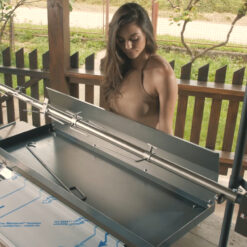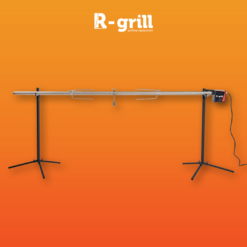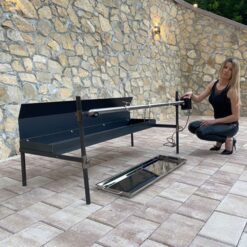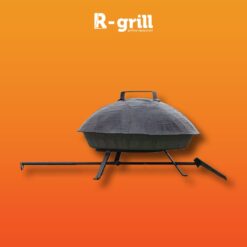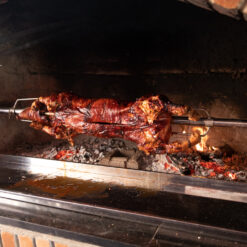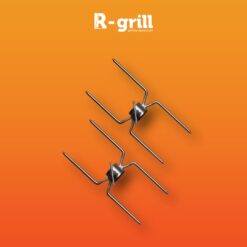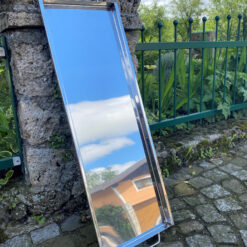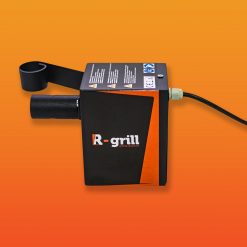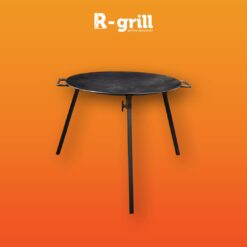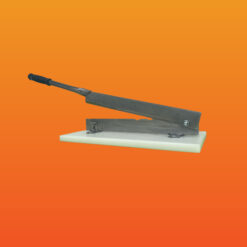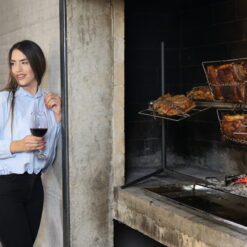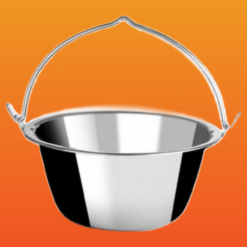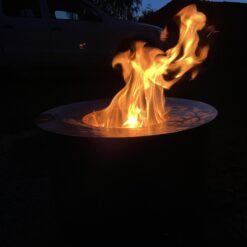Cooking meat to perfection is a skill that has been passed down for generations. Roasting
meat is a popular cooking method, and there are several different ways to do it, including
using a pig/hog roast, lamb rotisserie, or other types of roasting methods. In this article, we
will dive into each of these cooking methods and explore the techniques, equipment, and
tips you need to know to make the perfect roast.
Pig and hog roasting are cooking methods that have been used for centuries. In this method,
the entire pig or hog is roasted over an open fire or a pit, and it is often served at large
gatherings such as weddings, festivals, or barbecues. The difference between a pig and a
hog roast is that a pig is a young swine that weighs between 50 and 250 pounds, while a
hog is a mature swine that can weigh between 250 and 600 pounds.
When roasting a pig or hog, the meat is slowly cooked over several hours, which allows the
flavors to develop and the meat to become tender and juicy. This cooking method is perfect
for those who want to impress their guests with a unique and delicious meal.
A lamb rotisserie is a cooking method where a whole lamb is slowly rotated on a spit over an
open fire or heat source. This method of cooking allows the lamb to cook evenly, resulting in
juicy, tender, and flavorful meat.
Lamb rotisseries are popular in Mediterranean countries and are often used to cook the
traditional Greek dish, Souvlaki. In this dish, the lamb is marinated in spices and herbs, and
then slowly rotated over the heat source until it is cooked to perfection.
In addition to pig and hog roasting, and lamb rotisseries, several other types of roasting
methods can be used to cook meat to perfection. These methods include beef roasting,
chicken roasting, and venison roasting.
Beef roasting is a popular method of cooking beef cuts such as rib roasts, sirloins, and rump
roasts. In this method, the meat is seasoned and then placed in a roasting pan in the oven.
The heat circulates the meat, cooking it evenly and producing a juicy and tender beef roast.
Chicken roasting is another popular method of cooking meat to perfection. In this method,
the whole chicken is seasoned and placed in a roasting pan in the oven. As the chicken
cooks, the heat circulates it, resulting in juicy and flavorful meat.
Venison roasting is a cooking method perfect for those who enjoy wild games. In this
method, venison cuts such as roast or loin are seasoned and then slowly roasted in the oven
until they are cooked to perfection.
When it comes to roasting meat, it is important to choose the right equipment to ensure the
best results. There are several factors to consider when choosing roasting equipment,
including the type of meat, cooking method, and space and fuel type.
● Type of Meat: When choosing roasting equipment, it is important to consider the type
of meat you will be cooking. For example, if you are roasting a pig or hog, you will
need a large spit or rotisserie, while if you are roasting a chicken, you will need a
smaller rotisserie.
● Cooking Method: The cooking method you choose will also impact the type of
roasting equipment you need. For example, if you plan on using a pig or hog roast,
you will need a large open fire pit or grill, while if you are using a lamb rotisserie, you
will need a spit and a heat source.
● Space: Another factor to consider when choosing roasting equipment is the space
you have available. Make sure to choose equipment that will fit in the space you have
allocated for cooking. In our offer you can also find a spit for an outdoor fireplace.
(linkati na nas proizvod za vanjsko pecenje)
● Fuel Type: The type of fuel you use to heat your roasting equipment is also
important. For example, if you are using a pig or hog roast, you may need to use
charcoal, wood, or propane as your fuel source, while if you are using a lamb
rotisserie, you may need to use propane or electricity.
Recommended Roasting Equipment (h3)
● Pig/Hog Roast: For pig or hog roasting, you will need a large spit or rotisserie, a heat
source, and a grill or fire pit. Some popular brands for pig or hog roasting include our
R-Grill brand.our R-Grill brand.
● Lamb Rotisserie: For lamb rotisserie, you will need a spit, a heat source, and a
rotisserie motor. Some popular brands for lamb rotisseries include our R-Grill brand.
● Beef Roast: For beef roasting, you will need a roasting pan, a meat thermometer,
and an oven. Some popular brands for beef roasting pans include All-Clad and Le
Creuset.
● Chicken Roast: For chicken roasting, you will need a roasting pan, a meat
thermometer, and an oven. Some popular brands of chicken roasting pans include
our R-Grill brand.
● Venison Roast: For venison roasting, you will need a roasting pan, a meat
thermometer, and an oven. Some popular brands for venison roasting pans include
Calphalon and Le Creuset.
● Preparation: To prepare for a pig or hog roast, you will need to clean and season the
meat, and then place it on the spit or rotisserie.
● Cooking: When cooking a pig or hog roast, it is important to keep the heat source
consistent and to rotate the meat slowly and evenly. The cooking time will vary based
on the size of the pig or hog, but it is typically around 4-6 hours.
● Temperature: To ensure that the pig or hog is cooked to perfection, it is important to
monitor the internal temperature of the meat. The internal temperature should reach
145°F for pork and 165°F for poultry.
● Preparation: To prepare for a lamb rotisserie, you will need to marinate the meat in
spices and herbs, and then place it on the spit.
● Cooking: When cooking a lamb rotisserie, it is important to keep the heat source
consistent and to rotate the meat slowly and evenly. The cooking time will vary based
on the size of the lamb, but it is typically around 2-3 hours.
● Temperature: To ensure that the lamb is cooked to perfection, it is essential to
monitor the internal temperature of the meat. The internal temperature should reach
145°F.
● Preparation: To prepare for beef roasting, you will need to season the meat and
place it in a roasting pan. You can also add vegetables, such as carrots, onions, and
garlic, to the pan for additional flavor.
● Cooking: When roasting beef, it is important to preheat the oven to the desired
temperature and to place the roasting pan in the center of the oven. The cooking time
will vary based on the size and cut of the beef, but it is typically around 30 minutes to
1 hour.
● Temperature: To ensure that the beef is cooked to perfection, it is important to
monitor the internal temperature of the meat. The internal temperature should reach
145°F for medium-rare, 160°F for medium, and 170°F for well-done.
Chicken Roasting (h3)
● Preparation: To prepare for chicken roasting, you will need to season the chicken
and place it in a roasting pan. You can also add vegetables, such as carrots, onions,
and garlic, to the pan for additional flavor.
● Cooking: When roasting chicken, it is important to preheat the oven to the desired
temperature and to place the roasting pan in the center of the oven. The cooking time
will vary based on the size of the chicken, but it is typically around 45 minutes to 1
hour.
● Temperature: To ensure that the chicken is cooked to perfection, it is vital to monitor
the internal temperature of the meat. The internal temperature should reach 165°F.
● Preparation: To prepare for venison roasting, you will need to season the meat and
place it in a roasting pan. You can also add vegetables, such as carrots, onions, and
garlic, to the pan for additional flavor.
● Cooking: When roasting venison, it is important to preheat the oven to the desired
temperature and to place the roasting pan in the center of the oven. The cooking time
will vary based on the size and cut of the venison, but it is typically around 30
minutes to 1 hour.
● Temperature: To ensure that the venison is cooked to perfection, it is crucial to
monitor the internal temperature of the meat. The internal temperature should reach
145°F for medium-rare, 160°F for medium, and 170°F for well-done.
Roasting meat is a classic cooking method that has been enjoyed for centuries. Whether you
choose to roast a pig or hog, lamb, beef, chicken, or venison, it is important to consider
factors such as cooking method, space, fuel type, and equipment. With the right tools and
techniques, you can achieve perfectly roasted meat every time.
I hope we helped you learn something more about roasting meat. We will continue to write
about some good tips, follow our blog. The R-Grill team wishes you a pleasant and tasty
meal.
Share:
